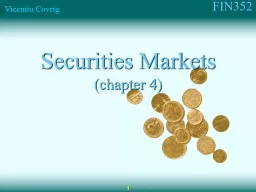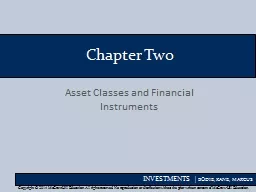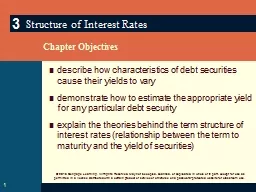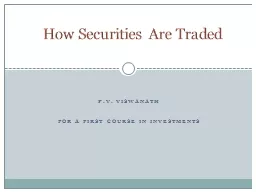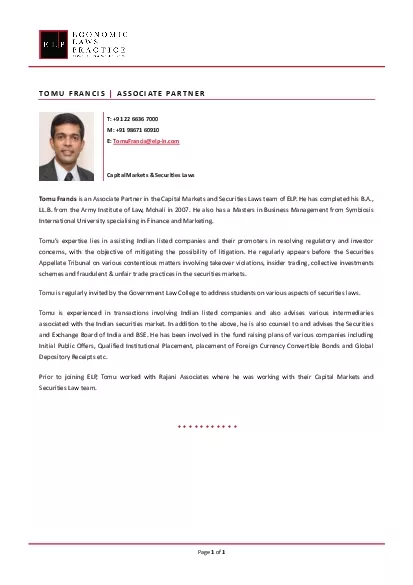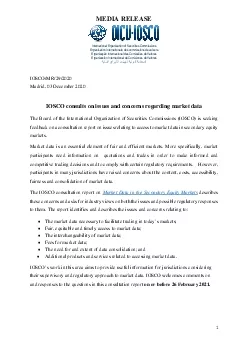PPT-Securities Markets (chapter
Author : jane-oiler | Published Date : 2018-10-14
4 Help firms and governments raise cash by selling claims against themselves Provide a place where investors can buy and sell securities investments Help the private
Presentation Embed Code
Download Presentation
Download Presentation The PPT/PDF document "Securities Markets (chapter" is the property of its rightful owner. Permission is granted to download and print the materials on this website for personal, non-commercial use only, and to display it on your personal computer provided you do not modify the materials and that you retain all copyright notices contained in the materials. By downloading content from our website, you accept the terms of this agreement.
Securities Markets (chapter: Transcript
Download Rules Of Document
"Securities Markets (chapter"The content belongs to its owner. You may download and print it for personal use, without modification, and keep all copyright notices. By downloading, you agree to these terms.
Related Documents

